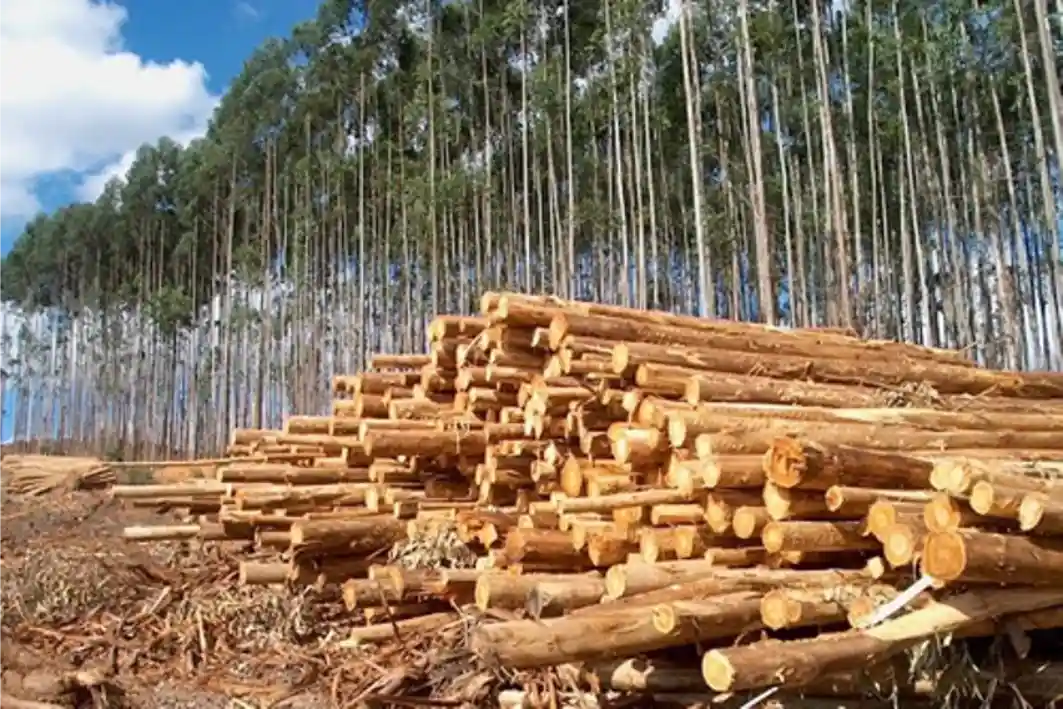As we have said before here and here, pulpwood has a great utility value and enormous economic importance in several countries. Eucalyptus is one of the most planted trees on the globe and one of the main resources for paper production. The choice is given by the easy planting due to its variety and adaptation in various types of climate, its productivity, as well as rapid growth compared to other types of wood.
In addition to eucalyptus, species such as pine and spruce and birch are also very important in obtaining cellulose pulp, which is mainly used in paper production.
After cutting, the raw material – resulting from stalks and trunks – needs to be cleaned, what means that it needs to have residues removed, such as foliage and branches. After cleaning, the wood is debarked and then ground into special machines.
From this, the material processed goes through different physical or chemical processes that give continuity to the production cycle. Depending on the assortment processed or the type of tree, fibers of different sizes are obtained – and knowing these differences is essential to determine the type of paper that will be produced.
Measuring is especially important in the process between cleaning and debarking, as it is in this very part of the production that the wood is selected and redistributed between different processes. At this stage, the professionals also have a better visualization of the quality of the cut wood, the size and the volume that is sent to each of these processes. And, it’s exactly with Timbeter that we want to make these processes, between cleaning and peeling, much faster, easier and more accurate.
With Timbeter, the goal is to be more accurate and faster with results provided by:
1- Correct air filling factor in every pile
Piles of logs in factories go through a stere volume (1x1x1 meter including bark and air) measurement, and this stere volume needs a coefficient (air filling factor) for the initial result to be converted into cubic meters. When a pre-set coefficient is used, errors are imminent and the resulting volume will not be in accordance with the real volume of the stack.
For example:
Imagine that a company uses a standardized air filling and its coefficient is 0.50. The price to be paid per cubic meter is $30. In one hypothesis, let’s say the responsible professional found 60 stere meters.
If the calculation of the cubic meter is 0.50 (coefficient) x 60 (stere meter) x 30(price), the total value to be paid will be 900 dollars.
Now, if the actual coefficient were actually equal to 56, then the average cost would be 0.56 × 60 (stereo meter) x 30 (price) = $1008.
It’s essential to reduce the margin of error, otherwise irreversible losses can happen in different parts of the process of measurement.
2 – Panorama Mode
Pulpwood piles are generally very large and difficult to measure, which makes the professionals spend a lot of time on a single task and also be subject to different climatic and working conditions. A large pile also becomes more susceptible to errors and logs can be forgotten, again, bringing losses on a large scale.
To measure a very large pile, the panorama mode of Timbeter is of great help, since in a single measurement it is possible to stitch several photos, giving the total volume of a large pile.
Timbeter uses artificial intelligence and machine-learning technology, which identifies the logs and eliminates duplicates, adjusting the piles as a whole. In addition, the process of measuring a pile in panorama mode with Timbeter takes much less time than the manual process, as well as being possible to measure the logs inside the office.
3 – Digital data
When making a measurement, all data is sent to our “Web Storage Module”, where it can be compiled, sent to partners and staff, and also maintained as digital proof.
In addition, making reports and organizing inventories becomes much easier and more convenient, since Timbeter provides all the necessary information. This ensures the elimination of bottlenecks in the production line, reducing errors, raising productivity and bringing more competitive prices.
In addition, Timbeter makes measuring timber quickly and more accurate, providing a much more dynamic process.
Have you started using Timbeter already? Download our app for Android or iOS and start making measurements today. Or, get in touch with us on info@timbeter.com
